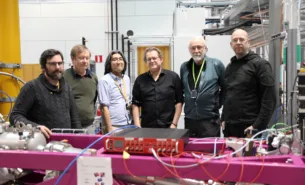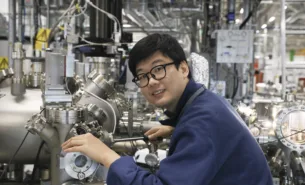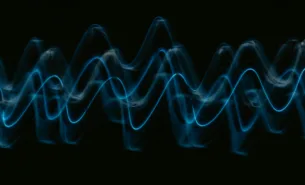Spintronics technology has taken a step forward with new experimental evidence of parallel spin-momentum locking in chiral materials. Results from the spin branch of the Bloch experiment station contributed to the discovery.
A step for spintronics
A technology known as spintronics is already used to some extent in devices like computer memory and sensors. The number of devices and applications based on spintronics is anticipated to grow in the future, as the technology is fast with low power consumption and enables new innovations like quantum computing. Spintronics builds on a property of electrons called spin, associated with magnetism rather than charge. Researchers are looking for materials that can be used to control the spin property, and that can be integrated with already existing devices.
An international team of researchers has used the new spin research branch at experiment station Bloch to investigate the material platinum-gallium. The team has shown that in this material, the direction of an electron’s spin is connected to the direction of the electrons’ momentum and, thus, to the direction in which it moves in the material.
“We have gathered the first experimental evidence of parallel spin-momentum locking of electrons in a material,” says Jonas A. Krieger, one of the researchers in the team. “In most systems, these two quantities point either perpendicular to each other or may have an arbitrary orientation. However, recently, some theoretical proposals have suggested that such a parallel “Weyl” spin momentum locking should be present in some materials.”
Chirality leads to control
The material the researchers have studied is chiral, meaning it has a “handedness.” There are two versions, so-called enantiomers, of the crystal, one left-handed and one right-handed. In one of these versions, the spin will always point in the same direction as the momentum and in the other, it will always point opposite to it.
“By changing from one enantiomer to the other, we have a completely new experimental handle to control spin polarisations that is not present in conventional systems,” says Krieger. “One of the main consequences of our finding is that if one would run an electrical current through such material, it will produce a co-propagating current of spins with a polarisation along the direction of the current flow.”
Minimal magnetic memories with spin current
Spin currents, flows of spins in the material, are used in magnetic memory applications. They are usually produced by passing an electrical current through a combination of magnetic and insulating materials. This setup has challenges when it comes to miniaturisation and significant energy loss via resistive heating.
“These problems can be avoided when using a chiral topological semimetal, which is non-magnetic and metallic,” says Krieger. “In our research, we will continue to look for experimental evidence of Weyl spin-momentum locking also in other chiral compounds.”
About the experiment at beamline Bloch
The researchers used an experimental technique called spin- and angle-resolved photoemission spectroscopy for their experiments. When X-rays shine on the sample, they will initiate the emission of electrons from it through the so-called photoelectric effect. The instruments used can measure the energy, angle and spin of the electrons coming out. This way, the researchers can learn about energy levels, allowed momenta and the direction of spin in the material.
“We actually combine measurements from multiple facilities and endstations, which allows us to exclude some of the potential experimental systematic errors,” says Krieger.” The measurements require spin resolution along all three directions, tunable photon energy, variable photon polarisation and sufficient energy and angular resolution. In practice, this means that one of the main limitations of this kind of experiment is the required acquisition time. Therefore, high photon flux in combination with a good energy resolution available at Bloch was crucial for us since this allowed us to measure extremely efficiently.”
Photo: Nick Fewings/Unsplash



